Back in September, I started working on my latest board game, Utu. Since then I’ve had the opportunity to playtest it with several groups of friends and family. Their feedback has been positive and helpful, and the game’s development continues apace. It’s reached the point where I’m no longer satisfied with printed cardstock and handwritten sticky notes on the backs of old Hexteria hexes. It’s time to print this thing!
In any relatively complicated game, it’s surprising how much design is involved. I needed hexes with oceans and islands, and artwork for the player mats and action boards and decks of cards. I’m not really very good at that sort of thing, so my past game designs have been a bit hit-or-miss. For Indio, I engaged my nephew Tim to design the hexes, and he did a great job with the abstract artwork I envisioned. It was much better than the heavily-modified internet photos I’d downloaded and edited. For Onward, I just found artwork on the internet and used it, because I knew I wasn’t going to be publishing the game (hence copyright wasn’t at stake). I think the results were quite good, but it felt a little like cheating to just grab other artists’ work.
Last week I spent long hours working on designs. I came up with color schemes and drew islands and oceans and underwater creatures. I copied some Polynesian tattoo patterns for the card decks. I hadn’t yet figured out what to do about the player mats and action boards. I felt kind of stuck.
Then I struck on an idea: could I generate the artwork using AI? Specifically, could I use Stable Diffusion, which I’d installed on my computer after scoring a high-end graphics card? I’d done a few experiments with it, but until now hadn’t found an opportunity to really put it to use. I updated some software and went to work.
The results were astonishing.
With prompts like “Polynesian boats on an ocean, with islands and palm trees”, it created artwork like this in about 60 seconds:

I continued modifying the prompts, dialing in the look I was going for, and was repeatedly amazed by what the software did. How about some stormy seas?
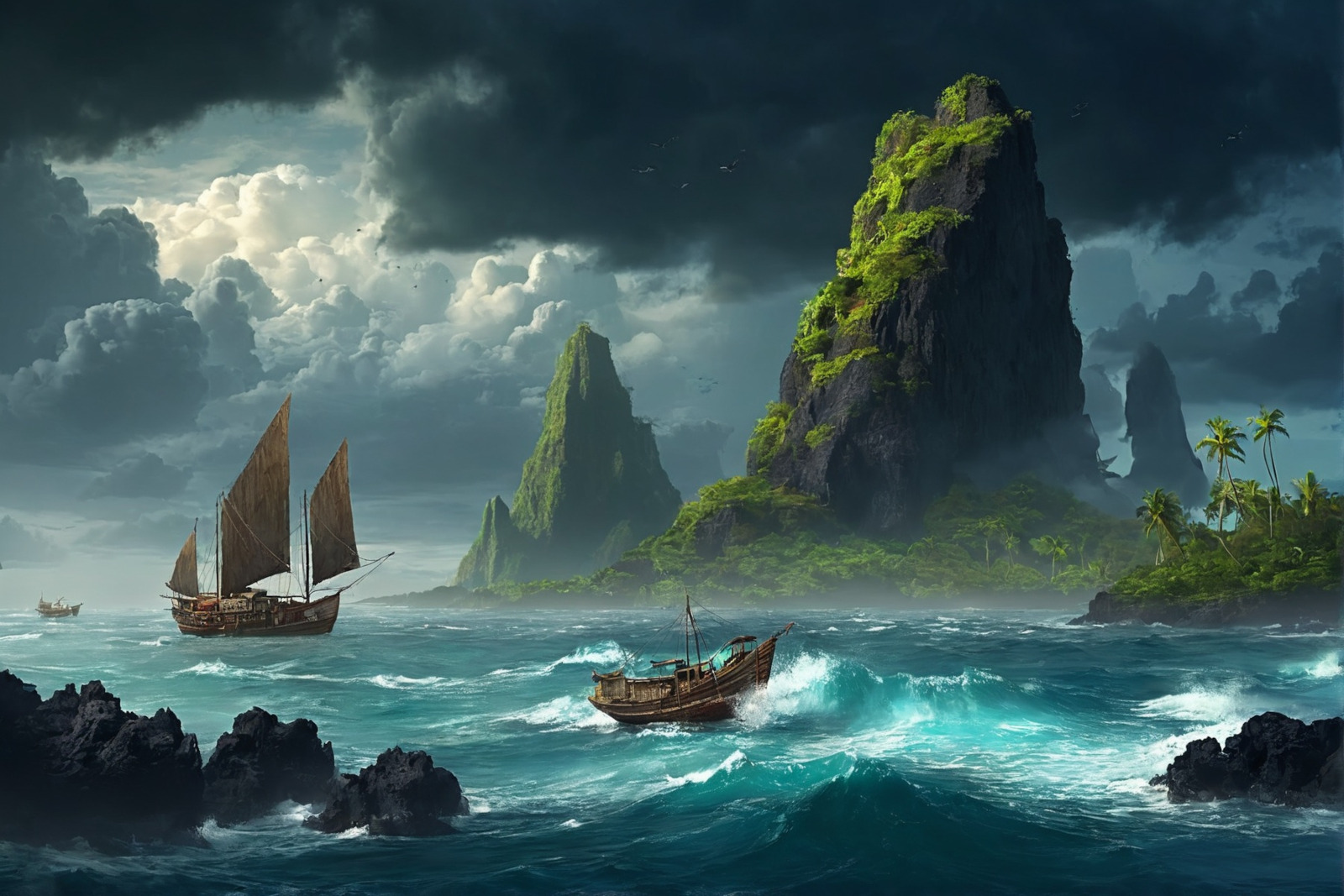
Or a sunset scene?
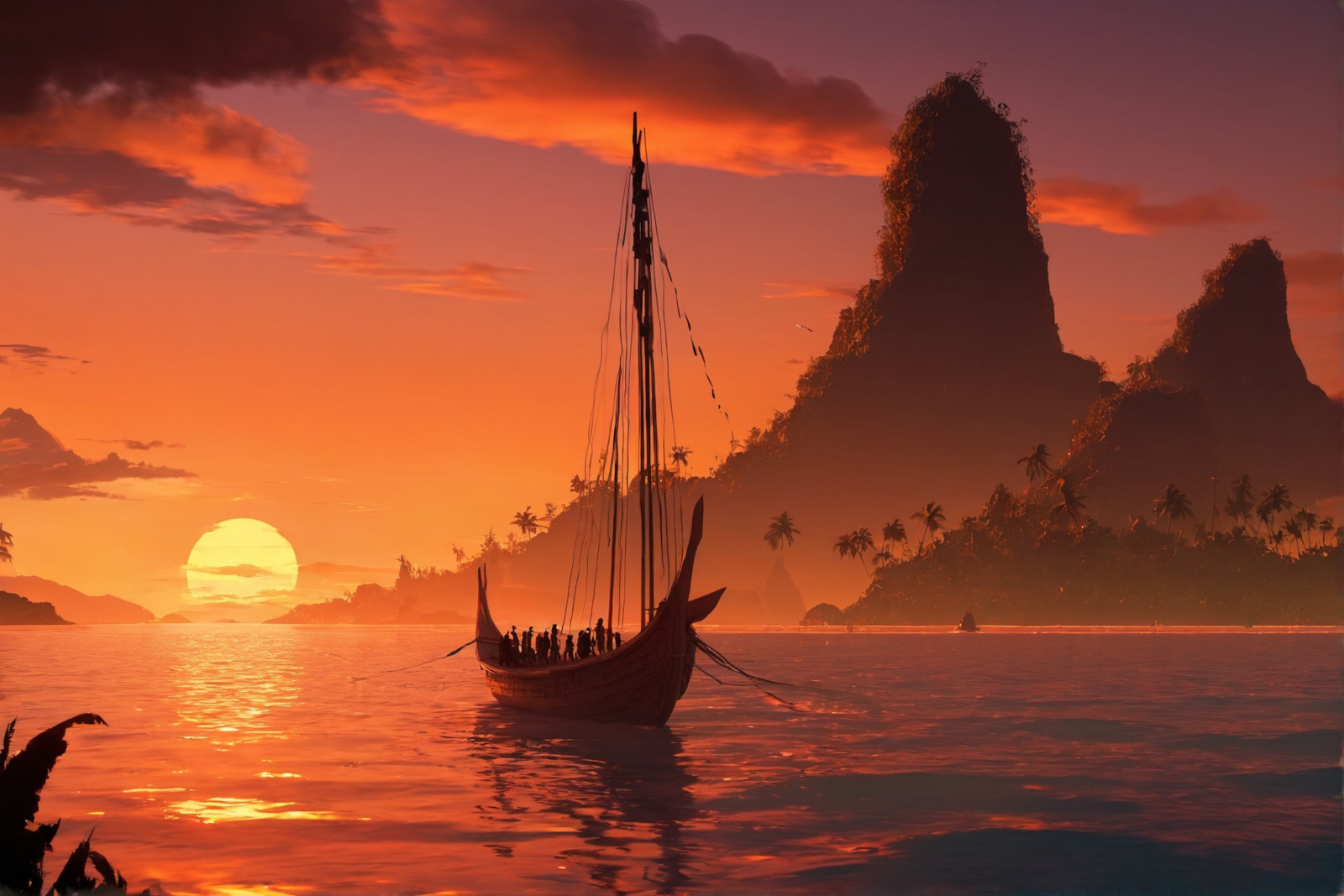
The hours passed quickly. I was having a ton of fun coming up with this artwork! The power of AI art was taking me in directions I hadn’t planned. Instead of having three or four island drawings, as I’d done last week, I could create a whole set of unique island art like this:

After a full day of creating artwork (it’s a time-consuming process, and sometimes results in less-than-useful results), I had the graphics I needed. I could transform my original drawn designs into these new AI-based ones. For example, here’s how an island hex changed:
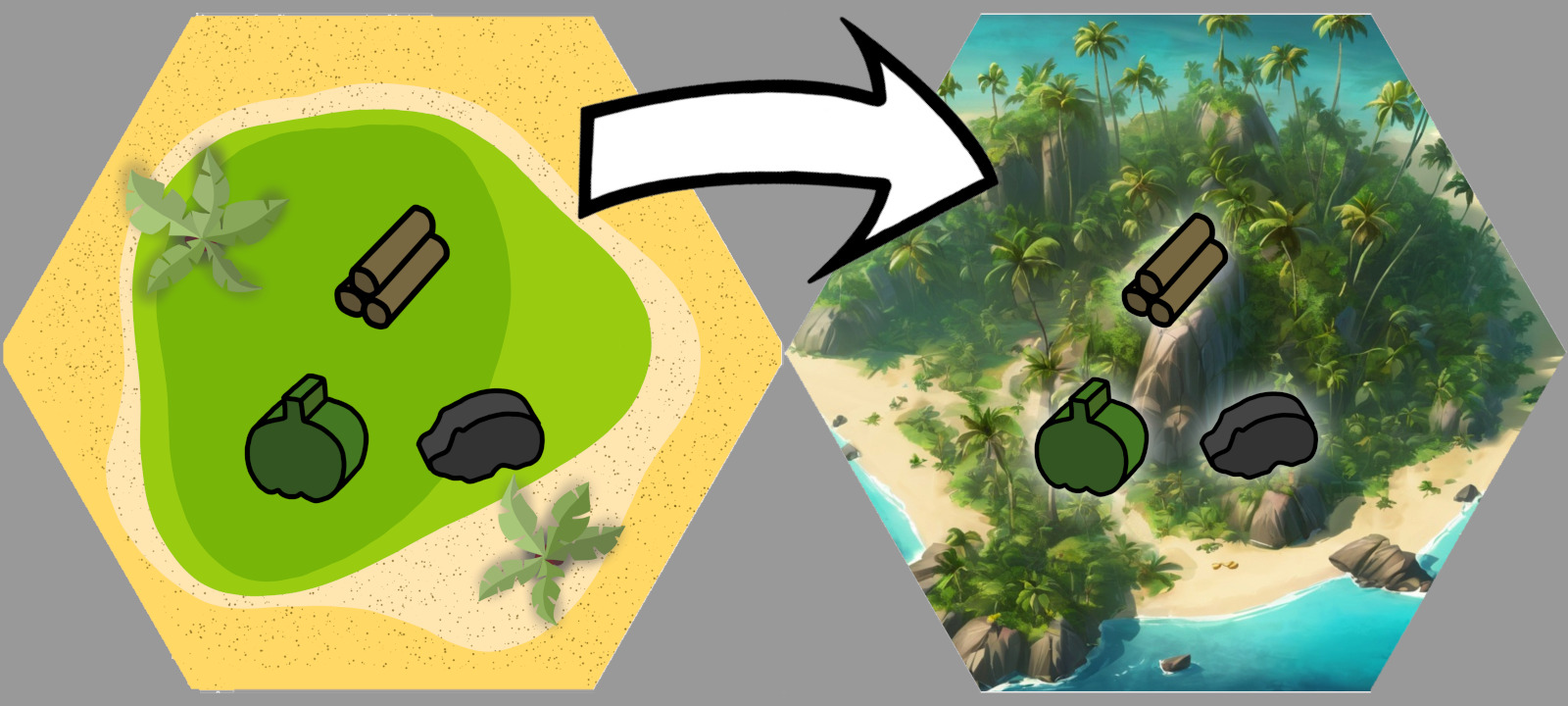
Here’s a player mat, from concept to finished art:
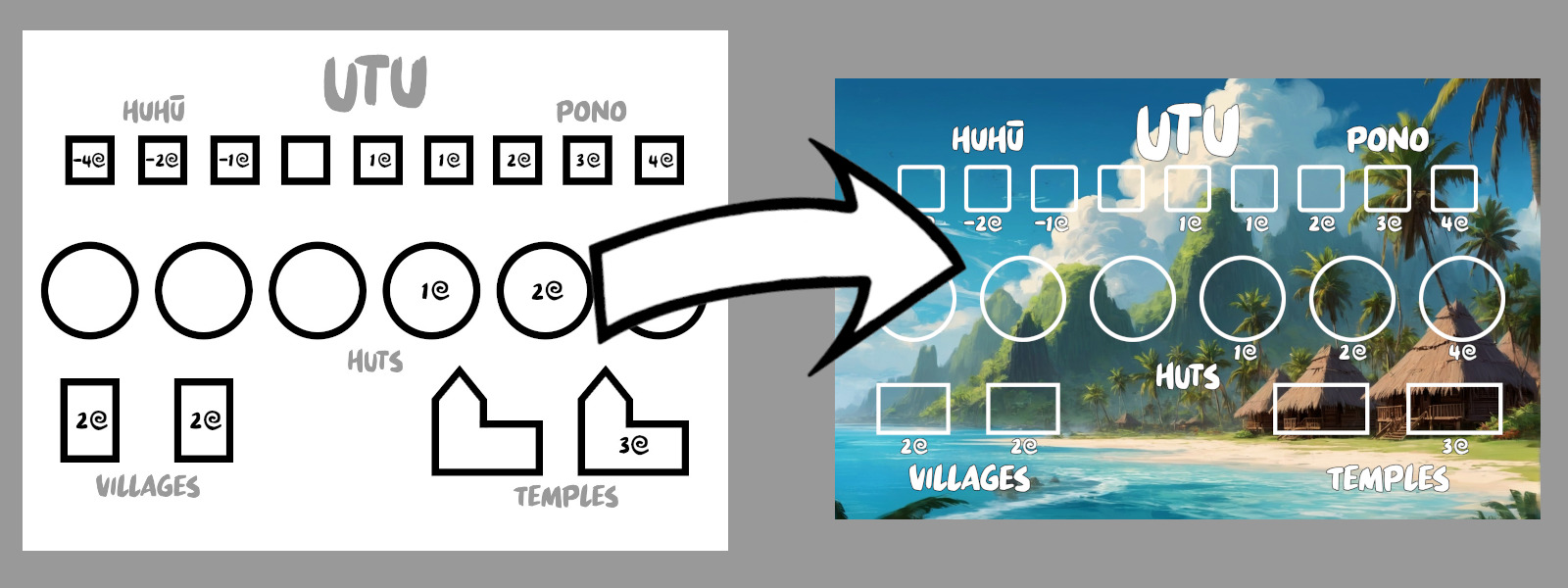
I could even design people, so I’d have a Polynesian chief and a princess.
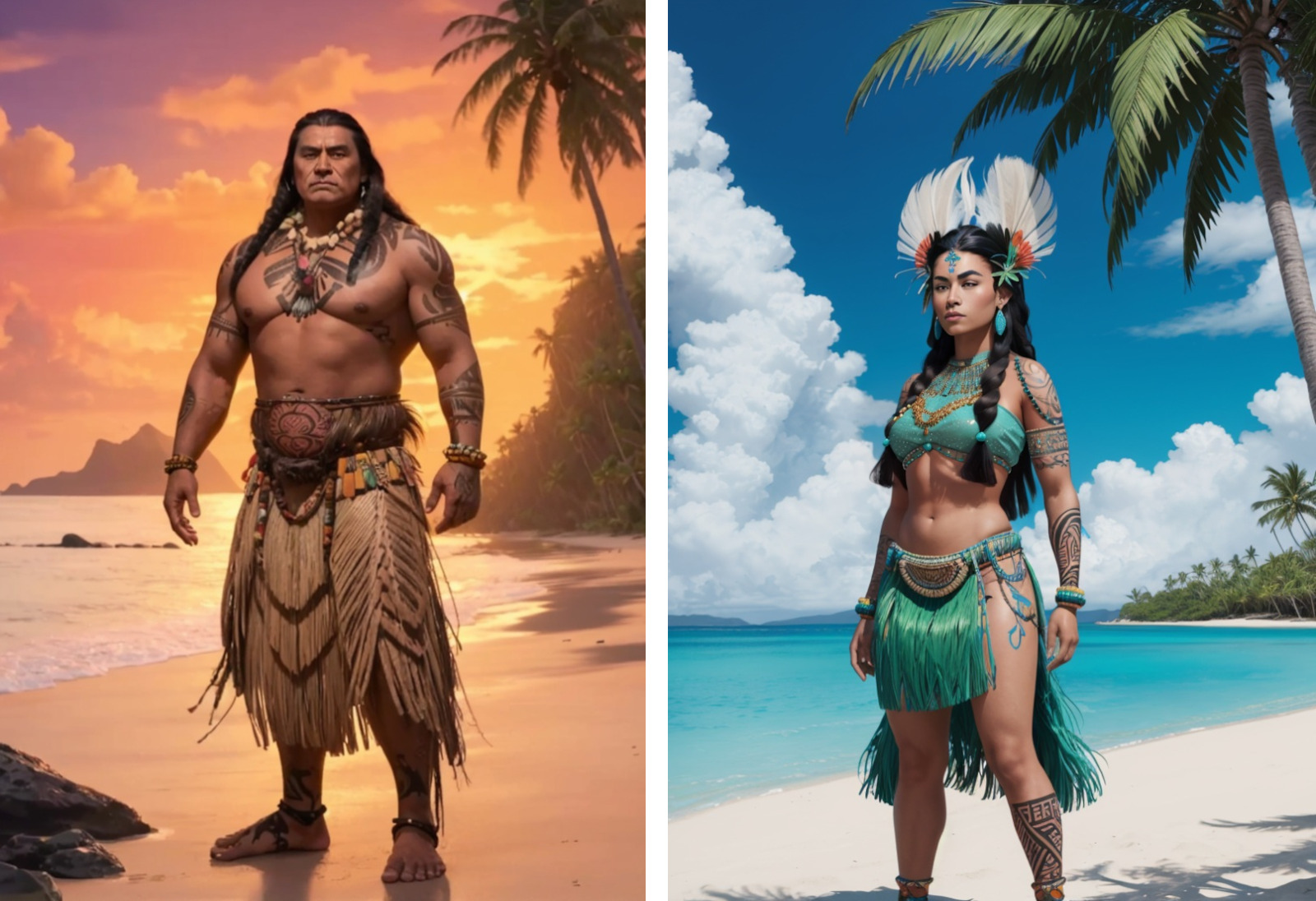
AI art generation is notoriously poor at rendering people (particularly eyes and fingers, for some reason) so this took some experimentation and a lot of refinement. But the final result is a thousand times better than what I could’ve done unaided.
This morning I spent a few hours compiling the cards and hexes, doing the template layouts, and finally sending all of it to the print company. In a few weeks I should have a fully designed, fully playable version of Utu to enjoy with the kids during our Christmas gathering. Woo hoo!
